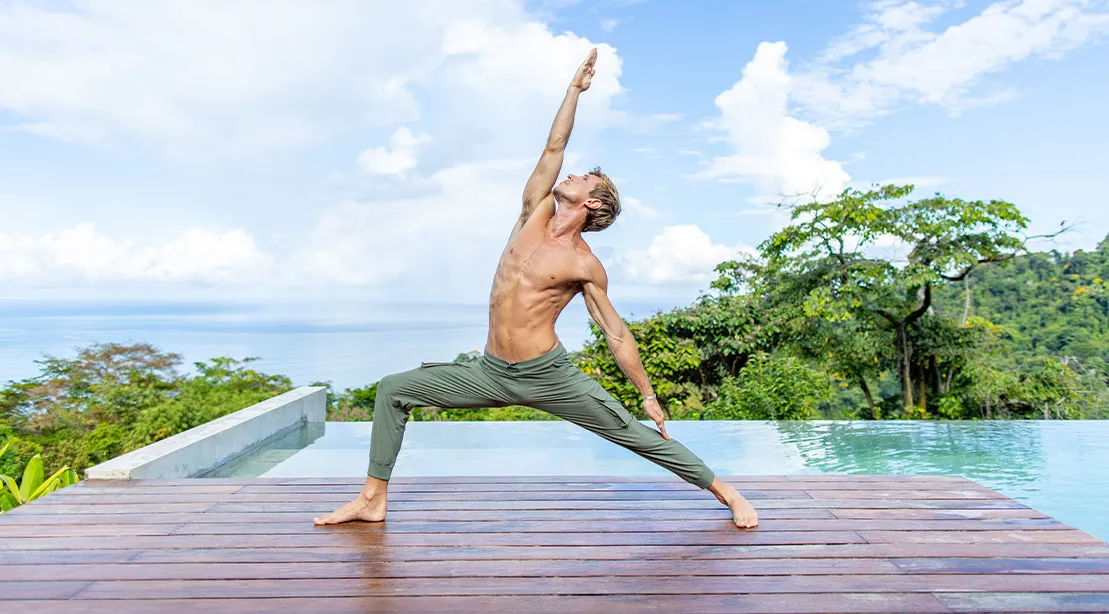🧘♂️ Yoga Poses Every Athlete Should Practice for Better Flexibility
From footballers and runners to cricketers and gym-goers — athletes at all levels are discovering the power of yoga. It’s no longer just about relaxation; yoga is a proven tool for improving flexibility, enhancing performance, preventing injuries, and accelerating recovery.
The best part? You don’t need to be a yogi. Just a few simple poses practised regularly can lead to major benefits — mentally and physically.
✅ Why Flexibility Matters for Athletes
Athletes often focus heavily on strength and endurance but ignore flexibility — until stiffness or injury strikes.
Benefits of better flexibility through yoga:
Greater range of motion in joints
Reduced muscle tension and soreness
Improved posture and alignment
Faster recovery after workouts
Lower risk of strains and sprains
Let’s look at the 10 best yoga poses that every athlete should include in their weekly routine.
🧘♀️ 1. Downward-Facing Dog (Adho Mukha Svanasana)
A classic pose that stretches the entire posterior chain — hamstrings, calves, spine, and shoulders.
Benefits:
Lengthens tight hamstrings
Opens up shoulders
Strengthens arms and legs
Tip: Keep your knees slightly bent if your hamstrings are tight.
🧘♂️ 2. Low Lunge (Anjaneyasana)
Perfect for opening up tight hips, which are common in runners, cyclists, and weightlifters.
Benefits:
Deep hip flexor stretch
Improves pelvic alignment
Builds balance and stability
Bonus: Add a twist by placing one hand on the floor and the other reaching to the ceiling.
🧘 3. Pigeon Pose (Eka Pada Rajakapotasana)
One of the most effective poses for hip opening and glute release.
Benefits:
Relieves tension in the hips and buttocks
Helps with sciatica and lower back pain
Improves range of motion
Note: Use a cushion under your hips for support if needed.
🧘♂️ 4. Seated Forward Fold (Paschimottanasana)
An excellent stretch for hamstrings, lower back, and calves.
Benefits:
Calms the nervous system
Stretches the spine and legs
Great post-run recovery pose
Modification: Keep a slight bend in your knees if you feel discomfort.
🧘♀️ 5. Reclining Spinal Twist (Supta Matsyendrasana)
A gentle but deep spinal twist that also helps the obliques and lower back.
Benefits:
Releases spinal tension
Stimulates digestion
Enhances spinal mobility
Great before bed for recovery and relaxation.
🧘 6. Standing Forward Bend (Uttanasana)
Often used in warmups or cooldowns, this pose increases circulation while targeting the back and legs.
Benefits:
Decompresses the spine
Stretches the hamstrings and calves
Can reduce stress and anxiety
Tip: Let your head hang loose and keep your knees slightly bent.
🧘♂️ 7. Butterfly Pose (Baddha Konasana)
Targets the inner thighs, groin, and hips — areas that tighten up from running or squats.
Benefits:
Improves hip mobility
Reduces groin strain risk
Helps release emotional tension
Gentle and effective, especially post-training.
🧘♀️ 8. Cat-Cow Stretch (Marjaryasana-Bitilasana)
A dynamic pose that warms up the spine and increases flexibility in the back and neck.
Benefits:
Improves posture
Boosts circulation
Reduces stiffness in the upper body
Perfect for a warm-up or cool-down before/after workouts.
🧘 9. Cobra Pose (Bhujangasana)
Strengthens the spine while stretching the chest, abs, and shoulders.
Benefits:
Enhances spinal flexibility
Opens up tight chest muscles
Counteracts hunching posture
Caution: Avoid overextending the lower back.
🧘♂️ 10. Legs-Up-the-Wall (Viparita Karani)
A restorative pose that helps reverse the effects of gravity and hard training.
Benefits:
Relieves tired legs and feet
Promotes circulation
Calms the nervous system
Great to do after long matches, runs, or gym sessions.
🕒 How Often Should Athletes Practice Yoga?
You don’t need a 90-minute session every day. Here’s a practical guide:
| Goal | Frequency |
|---|---|
| Post-workout recovery | 2–3 times/week (15–20 mins) |
| Flexibility training | 3–4 times/week |
| Injury prevention | 10 mins daily |
| Full-body recovery | 1 long session/week (30–60 mins) |
🔄 Sample 15-Minute Yoga Routine for Athletes
You can try this mini-sequence at home or after a workout:
Cat-Cow Stretch – 1 min
Downward Dog – 1 min
Low Lunge (both sides) – 2 mins
Pigeon Pose (both sides) – 2 mins
Seated Forward Fold – 2 mins
Butterfly Pose – 1 min
Spinal Twist – 2 mins
Legs Up the Wall – 3 mins
🙌 Final Thoughts: Flexibility Is Strength in Disguise
Yoga isn’t just for the flexible — it creates flexibility over time. For athletes, it’s a secret weapon for injury prevention, better performance, and faster recovery.
Start slow, stay consistent, and listen to your body. Even 10 minutes of yoga a day can create lasting benefits over time.
🙋♀️ FAQs
Q: Can beginners do these yoga poses?
Yes! Most poses here are beginner-friendly. Use props or modifications if needed.
Q: Is yoga enough for flexibility?
Yoga is one of the best tools, but combining it with proper hydration, rest, and strength training works best.
Q: What’s the best time to do yoga?
Anytime! Morning for energy, post-workout for recovery, or evening to unwind.













Recent Comments
No comments yet.